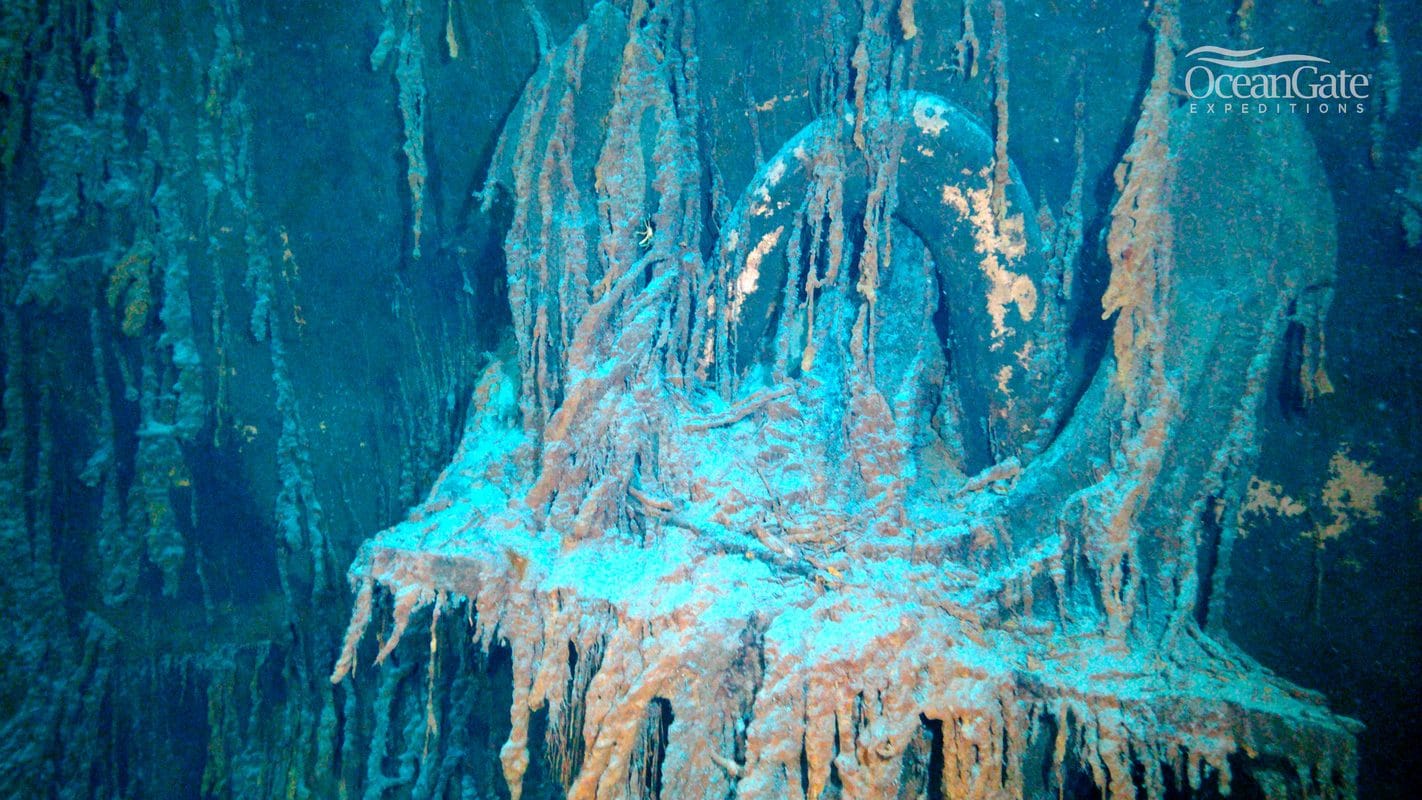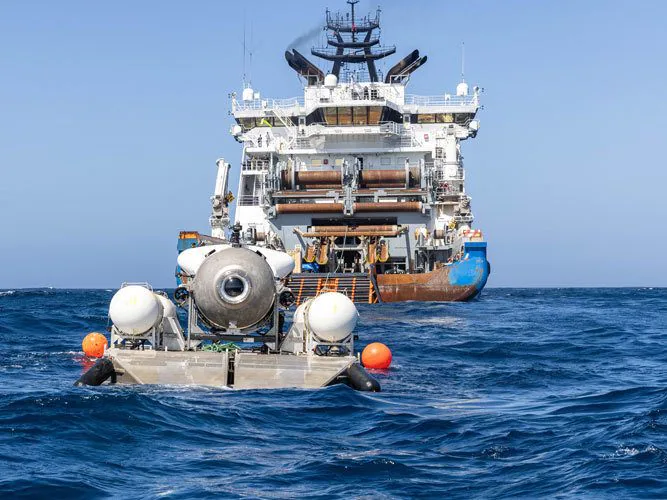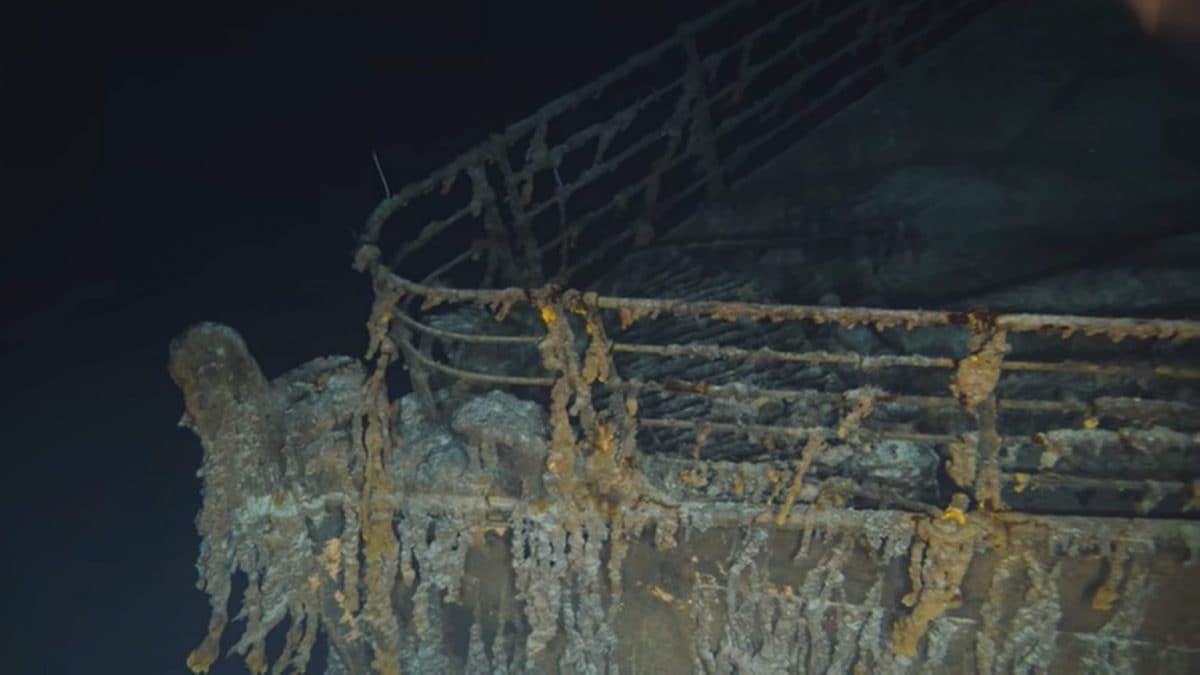The wreck of the Titanic was filmed in a quality never seen before: the video of the sunken colossus
The OceanGate Expeditions company specializing in the exploration of the ocean floor filmed the wreck of the Titanic at 8K, in unprecedented detail.
Il wreck of the Titanic the largest and most luxurious transatlantic never built was identified for the first time on September 1, 1985, by the team led by the American archaeologist and oceanographer Robert Ballard, thanks to the help of the submarine "Argo". Since then, many have captured images of the gigantic nave 270 meters long, which broke into two sections after the impact with the infamous iceberg which sank it on April 15, 1912.
Today, 110 years after the tragic event, which cost the lives of over 1,500 people, the researchers, and adventurers of society OceanGate Expeditions recorded the most detailed and evocative video of the submerged colossus, thanks to very powerful cameras equipped with an 8K resolution (4.320p). It is the first time that the famous wreck has been documented with such quality.
The preview of the video "First 8K Video of the RMS Titanic", which you can see at the top of the article, has been uploaded to the organization's Youtube channel, allowing an unprecedented look at the remains of the transatlantic, whose story has become even more legendary thanks to the blockbuster by James Cameron of 1997 with the young Leonardo DiCaprio and Kate Winslet.
“The incredible detail in the 8k footage will help our team of marine scientists and archaeologists characterize the decay of the Titanic more accurately as we capture new footage in 2023 and beyond. Capturing this 8K footage will allow us to zoom in and maintain 4K quality, which is key to engaging, big-screen video projects.
Even more remarkable are the phenomenal colors in this footage, ”OceanGate Expeditions President Stockton Rush enthusiastically said in a press release. Comparison with videos recorded in 2021 allowed experts to notice several changes in some areas of the Titanic, which has continued to be relentlessly consumed by Atlantic salt for over a century. The images were captured by the cameras installed on the versatile submarine Titan.

L’ancora del Titanic. Credit: OceanGate Expeditions
Among the details observed for the first time by the experts are some writings of the anchor manufacturer Noah Hingley & Sons Ltd., found on the gigantic port anchor. “I have studied the wreck for decades and completed multiple dives, and I don't remember seeing any other images showing this level of detail.
It's exciting that, after so many years, we've discovered a new detail that wasn't as evident with previous generations of camera technology, ”said OceanGate Expeditions diver and veteran Rory Golden. Other elements that can be observed in the video are the GRU used to lift the huge still 15 tons and a steel shackle or grab bar which at the time was attached to the Titanic's (collapsed) mast.
In the second part of the video, instead, peculiar round structures are seen, the fairleads that allowed the ship to dock at the port and be kept safe. At some point, you also see the catena port anchor, whose rings weighed more than 90 kilograms each. “One of the most surprising clips shows one of the boilers that fell to the bottom of the ocean when the Titanic broke in two. Notably, it was one of the boilers that were first spotted when the Titanic wreck was identified in 1985, ”said Golden.
A new Covid variant in India appears to be the most contagious ever seen

The Titan submarine
During the video at a certain point, you can also see two green laser dots; they are luminous indicators - 10 centimeters away - which are used by researchers to determine the size of the framed objects. These are all very useful data that will help to evaluate and monitor the decay rate of the Titanic during the next expeditions.
OceanGate Expeditions, a world leader in deep ocean exploration, is already planning the mission for May 2023. In addition to studying the wreck, scientists are gathering information on the biodiversity which was formed on the remains of the colossus sunk during the maiden voyage (between Southampton and New York), offering valuable data also for ecologists and biologists.
Reference: Wikipedia




